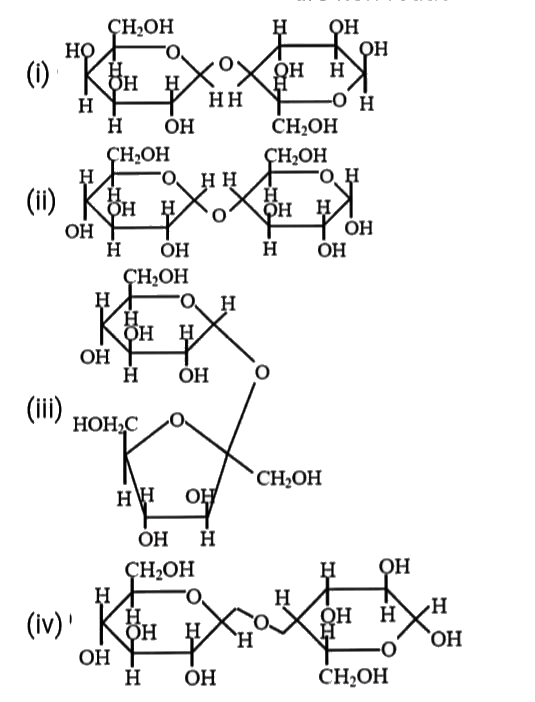Which one of the following is a reducing sugar?
A) Maltose
B) Cellulose
C) Glucose
D) Sucrose
The correct Answer is:C
To determine which of the given options is a reducing sugar, we can follow these steps:
Step 1: Understand what a reducing sugar is
A reducing sugar is a carbohydrate that can donate electrons to another chemical, thus reducing it. This typically occurs because the sugar has a free aldehyde or ketone group that can be oxidized.
Step 2: Analyze the options
We have four options to consider:
- Option A: Maltose
- Option B: Cellulose
- Option C: Glucose
- Option D: Sucrose
Step 3: Evaluate each option
1. Maltose: Maltose is a disaccharide composed of two glucose units. It has a free aldehyde group in one of the glucose units, which can be oxidized, making it a reducing sugar.
2. Cellulose: Cellulose is a polysaccharide made up of many glucose units linked together. It does not have a free aldehyde group, so it is not a reducing sugar.
3. Glucose: Glucose is a monosaccharide with a free aldehyde group. It can easily donate electrons, making it a reducing sugar.
4. Sucrose: Sucrose is a disaccharide formed from glucose and fructose. In sucrose, the aldehyde group of glucose is involved in the glycosidic bond, meaning it is not free to act as a reducing agent. Therefore, sucrose is not a reducing sugar.
Step 4: Conclusion
Based on the analysis, the only reducing sugar among the options is Option C: Glucose.
Final Answer
The answer is Glucose (Option C).
---
A reducing sugar is a carbohydrate that can donate electrons to another chemical, thus reducing it. This typically occurs because the sugar has a free aldehyde or ketone group that can be oxidized.
We have four options to consider:
- Option A: Maltose
- Option B: Cellulose
- Option C: Glucose
- Option D: Sucrose
1. Maltose: Maltose is a disaccharide composed of two glucose units. It has a free aldehyde group in one of the glucose units, which can be oxidized, making it a reducing sugar.
2. Cellulose: Cellulose is a polysaccharide made up of many glucose units linked together. It does not have a free aldehyde group, so it is not a reducing sugar.
Based on the analysis, the only reducing sugar among the options is Option C: Glucose.
The answer is Glucose (Option C).
Topper's Solved these Questions
- BIOMOLECULESBOOK - ICSECHAPTER - BIOMOLECULESEXERCISE - REVIEW QUESTIONS (FILL IN THE BLANKS)
20 Videos
- BIOMOLECULESBOOK - ICSECHAPTER - BIOMOLECULESEXERCISE - REVIEW QUESTIONS (ANALOGY TYPE QUESTIONS)
10 Videos
- BIOMOLECULESBOOK - ICSECHAPTER - BIOMOLECULESEXERCISE - NCERT EXERCISES WITH ANSWERS (DIFFERENTIATE BETWEEN)
25 Videos
- BIOLOGY ISC SAMPLE QUESTION PAPER 2019BOOK - ICSECHAPTER - BIOLOGY ISC SAMPLE QUESTION PAPER 2019EXERCISE - PART-II (SECTION -C)
6 Videos
- BODY FLUIDS AND CIRCULATIONBOOK - ICSECHAPTER - BODY FLUIDS AND CIRCULATIONEXERCISE - DIFFRENTIATE BETWEEN
13 Videos
Similar Questions
Knowledge Check
Which of the following is non-reducing sugar ?
AGlucoseBSucroseCMaltoseDLactose
Which of the following are the reducing sugars?AX and YBX and ZCY and ZDAll of these
Which one of the following is a non-reducing carbohydrate?
View SolutionWhich one of the following is a non-reducing carbohydrate?
View SolutionWhich of the following is reducing sugar ?
View SolutionWhich of the following is/are non-reducing sugars?
View SolutionWhich is a reducing sugar?
View SolutionWhich of the following are non-reducing sugars -

View Solution
